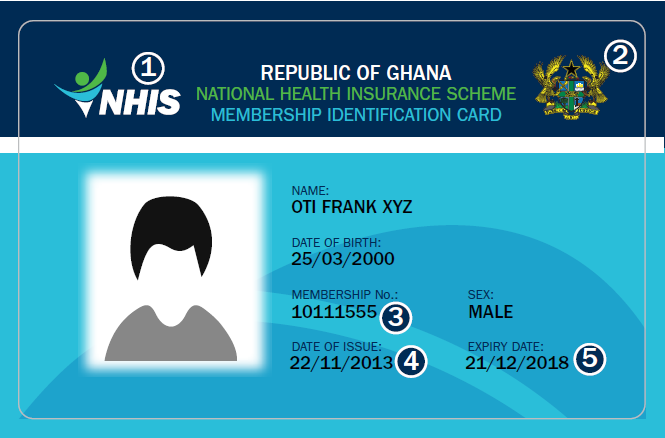
Ghana’s National Health Insurance Scheme - From grace to grass
Ghana’s National Health Insurance Scheme (NHIS), which came into being in 2003 when Act 650 was enacted, arguably the largest, most comprehensive and ambitious pro–poor social programme since Ghana’s independence in 1957, aims at addressing the inequities in financial access to health care.
Advertisement
It has severally been christened the best health insurance scheme in sub–Saharan Africa by some commentators. Every conceivable Ghanaian has lauded the scheme as the panacea to the deadly and obnoxious upfront payment dubbed “cash and carry system” by some Ghanaians.
The key political leaders, the New Patriotic Party (NPP) and the National Democratic Congress (NDC), have both pledged to improve upon the operationalisation of the scheme after the initial bickering over who really introduced it.
Admittedly, between 2007 and 2012, the scheme ran creditably well and some countries even came to study this social protection flagship programme as far as health financing is concerned. Indeed, the financial barrier that hindered people, largely the poor, from accessing health care, has largely been removed by the operationalisation of the NHIS.
Heavy indebtedness
Outpatient visits more than tripled and OPD per capita improved significantly during the operation of the scheme. However, since 2013 to date, the NHIS has been reeling under heavy indebtedness to health service providers ranging from five to eight months averagely. The question is, why is such an enviable programme failing and apparently capitulating into irrelevance? What went wrong?
Operational challenges
The first reason can be attributed to leadership failure on the part of the National Health Insurance Authority (NHIA) to act proactively, appropriately and decisively despite early warning signals. The NHIA’s leadership could have foreseen these challenges as early as 2008, when it was the last year it recorded a surplus.
Also, complacency and fear to make known and discuss the true and real facts that account for the operational challenges confronting the scheme, no matter how grim they may be, contributed to the current state of the NHIS.
One common behaviour of institutions on their way to collapse is when those in power blame other people or external factors or otherwise explain away the data rather than confront the frightening reality and admit that the institution may be in serious trouble.
Rather, as Jim Collins puts it, “The best corporate leaders remain students of their work, relentlessly asking questions why, why, why and have an incurable compulsion to vacuum the brains (and I dare add criticisms) of the people they meet.”
As per the Daily Graphic publication on April 13, 2015 (page 38), the NHIS started recording deficits as far back as 2010. The compelling questions to ask are; why were Ghanaians not told the truth? Why did managers continuously, prior to this publication, vehemently deny that the scheme was in crisis?
Accreditation of facilities
Thirdly, the ubiquitous siting of accredited facilities to provide health service is a major cause for the peril of the NHIS. In some cases, facilities are accredited as close as 400 metres apart. Meanwhile, the Ministry of Health’s (MOH) policy to increase access to health facilities recommends that health facilities should be sited at least eight kilometres apart.
This has been complied with by government and mission or faith-based health organisations all along. However, the failure by NHIA not to accredit facilities within the approved range has led to the mushrooming of private clinics, hospitals, pharmacy shops and diagnostic centres. This awful situation facilitates frivolous usage of health services by subscribers who literally hop from one facility to the other within relatively very short intervals.
Moreover, it is an open secret that there are real corrupt practices being perpetrated by some health providers and maybe, some unscrupulous officials of the NHIA. Many of such financial malpractices against the scheme are not reported. Corrupt practices, notably by some health facilities, are the bane of the NHIS.
Also, the benefit package of the NHIS is too ambitious. Currently, the benefit package covers primary, secondary, specialist and tertiary health services. Services which could have been accessed at the primary level are being accessed at the secondary and the tertiary level, which cost the scheme higher than they would have been at the primary level due to weak gatekeeper system.
Another reason accounting for the current moribund state of the NHIS is high dependency ratio. Information from the NHIA indicates that about 70 per cent of the NHIS subscribers are the aged, children, indigents and pregnant women who virtually do not pay any premium.
Saving lives or making profit
There seems to be pernicious change in mission or focus in the health industry from saving lives to making money. It is good for government to let the private sector support healthcare provision, particularly in areas government and mission institutions cannot provide.
However, where the mission of setting up health facilities is keenly to make profit with the aid of the NHIS, the scheme would definitely not be sustainable.
Finally, the low and erratic financial inflow into the National Health Insurance Fund (NHIF) is another cause for the sickening NHIS.
Ghana’s economy generally has a narrow tax net and, therefore, the quantum of tax collected is low since many people, especially the self-employed and those in the informal sector, do not pay requisite taxes.
Also, the transfer of funds to the NHIF is not regular and in most cases, these transfers are in arrears.
The writer is the Hospital Administrator for Oda Government Hospital



